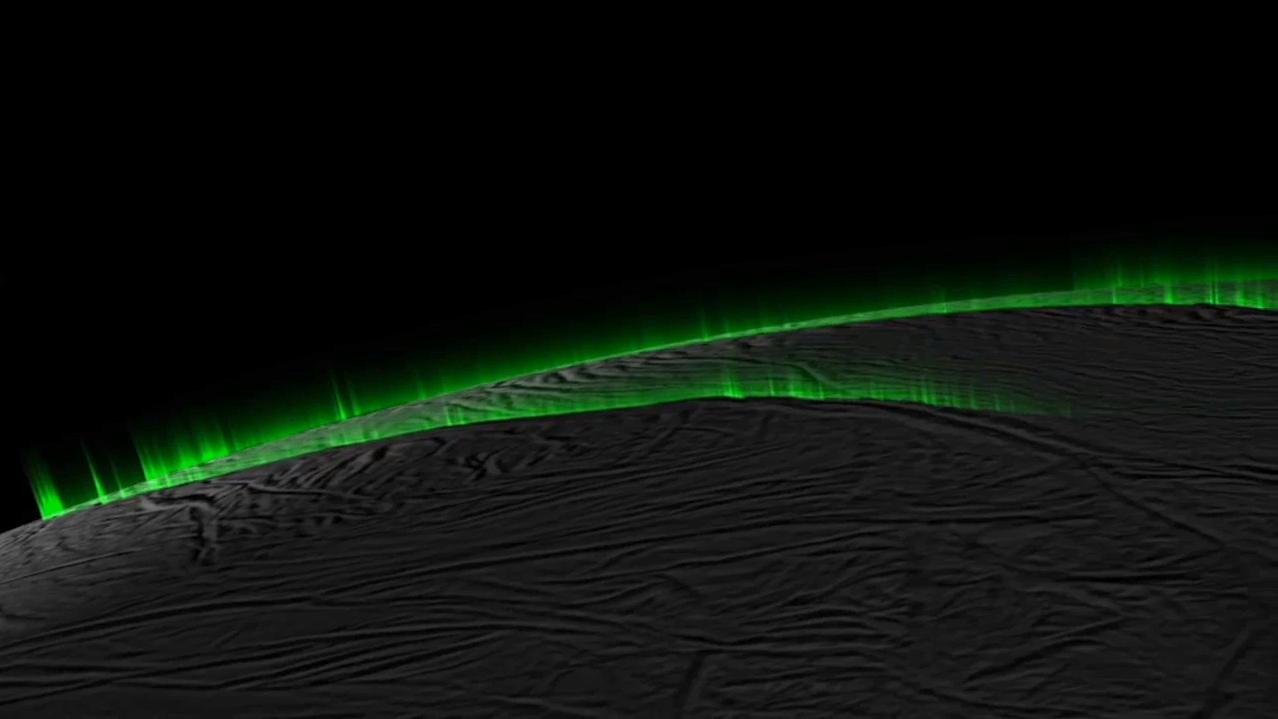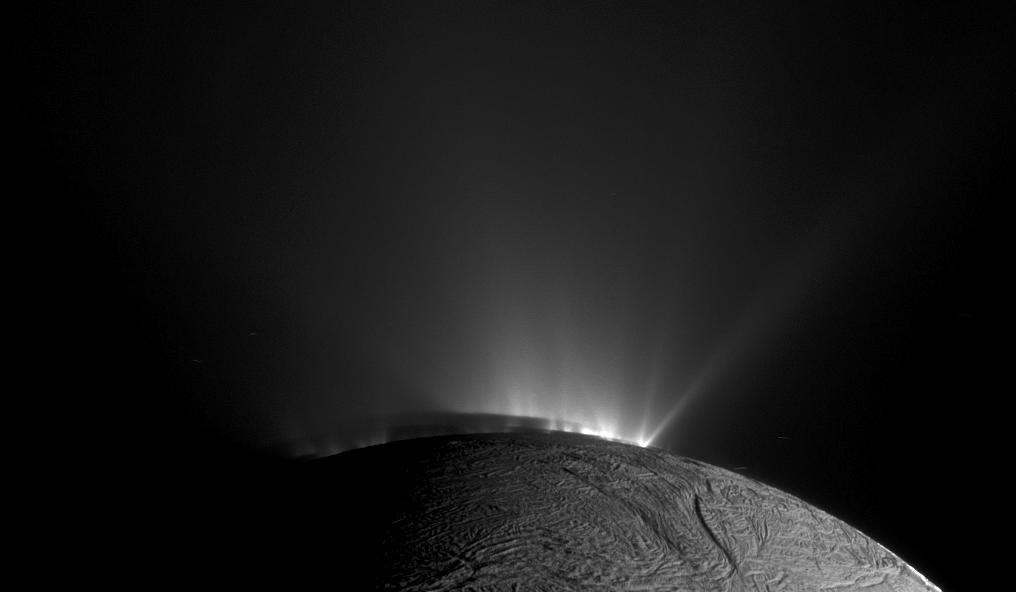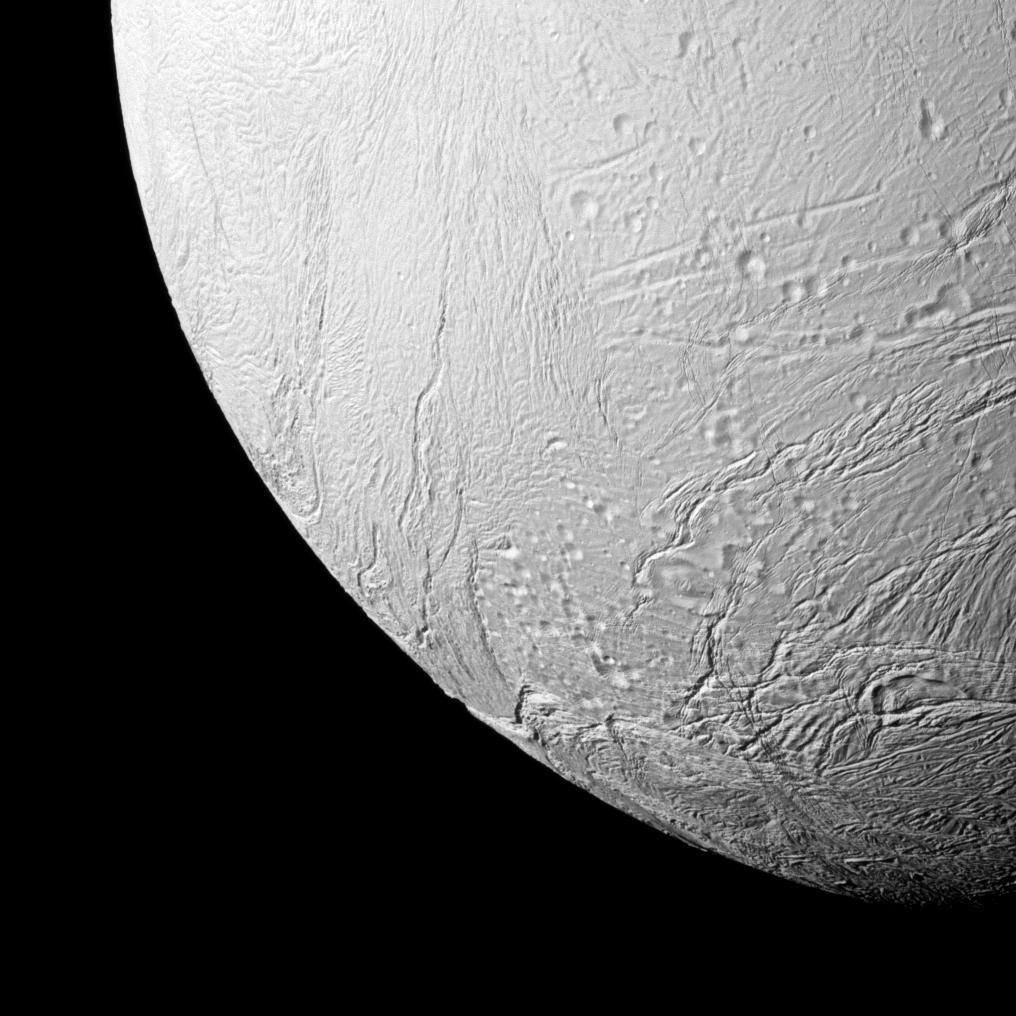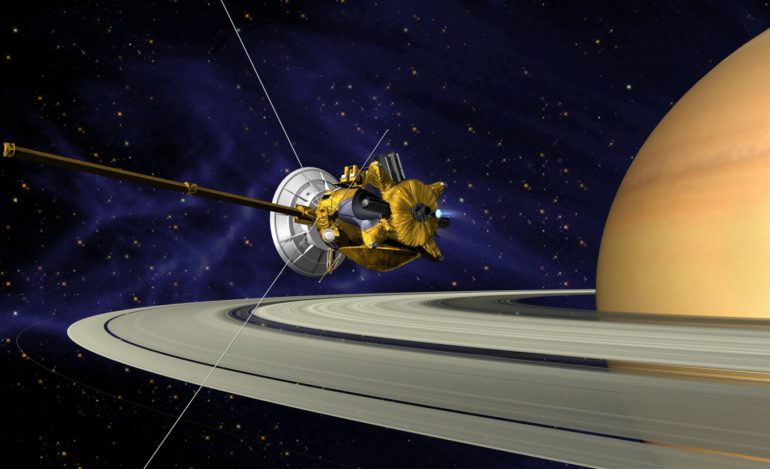[dropcap size=small]N[/dropcap]ASA’s Cassini spacecraft rushing past the Eceladus, sixth largest of the 62 moons of Saturn took the most detailed pictures of the north pole of Eceladus which was in a flounder before the mission. The Cassini mission is a cooperative project of NASA, ESA (the European Space Agency) and the Italian Space Agency. The Cassini orbiter and its two onboard cameras were designed, developed and assembled at JPL. The imaging operations center is based at the Space Science Institute in Boulder, Colorado. The spacecraft took the images on Oct 14 when it flew by the moon at a distance of 1,839 kilometers above the surface.
On October 28, the craft flew straight through the moon’s famous plumes—the active geysers, discovered in 2005, that feed Saturn’s rings with icy debris—when they’re at their most active.

Discovered in 1789 by William Herschel, Enceladus is mostly covered by fresh, clean ice reflection almost 100% of the sunlight that falls in it making its surface temp to reach a maximum of -198°C. Surface regions on Enceladus vary from old crated regions to young tectonically deformed terrains.
Fast-moving ice particles escaping from Enceladus’ jets feed and replenish one of Saturn’s rings, called the E ring — a faint halo that lies beyond the brighter main rings.

A stunning image of moon’s north pole depicting thin cracks cross over the pole – the northernmost extent of a global system of such fractures.

A tight trio of craters located at high northern latitudes with thin fractures whose network wraps around the moon slicing across them.

Eruptions from Enceladus along prominent fractures that stretch across its south pole in form of uniform curtains.

A narrow angle image of geyser basin at the south pole of Enceledus.

A close up view of some of the southern terrain of Saturn’s moon Enceladus, where newly created terrain is on display.




